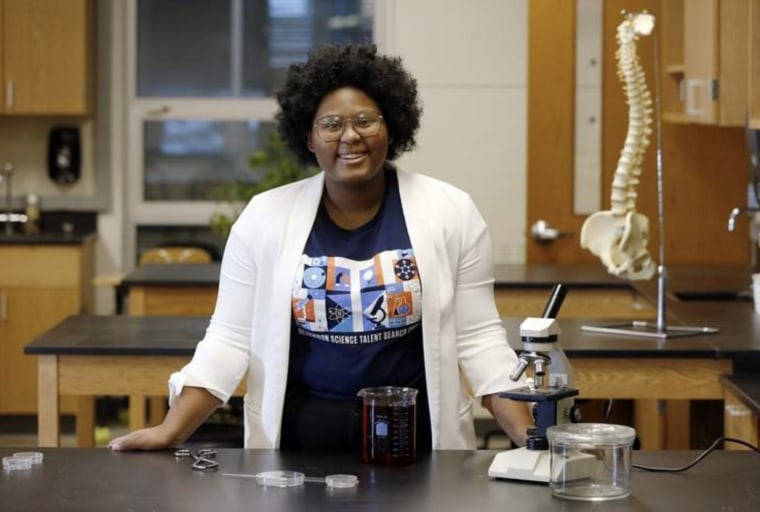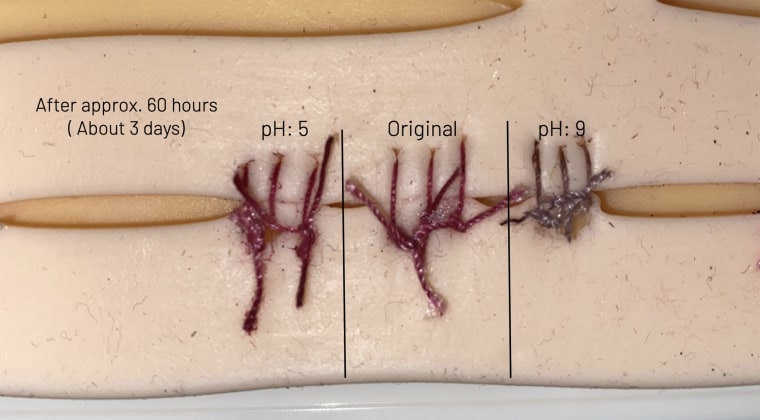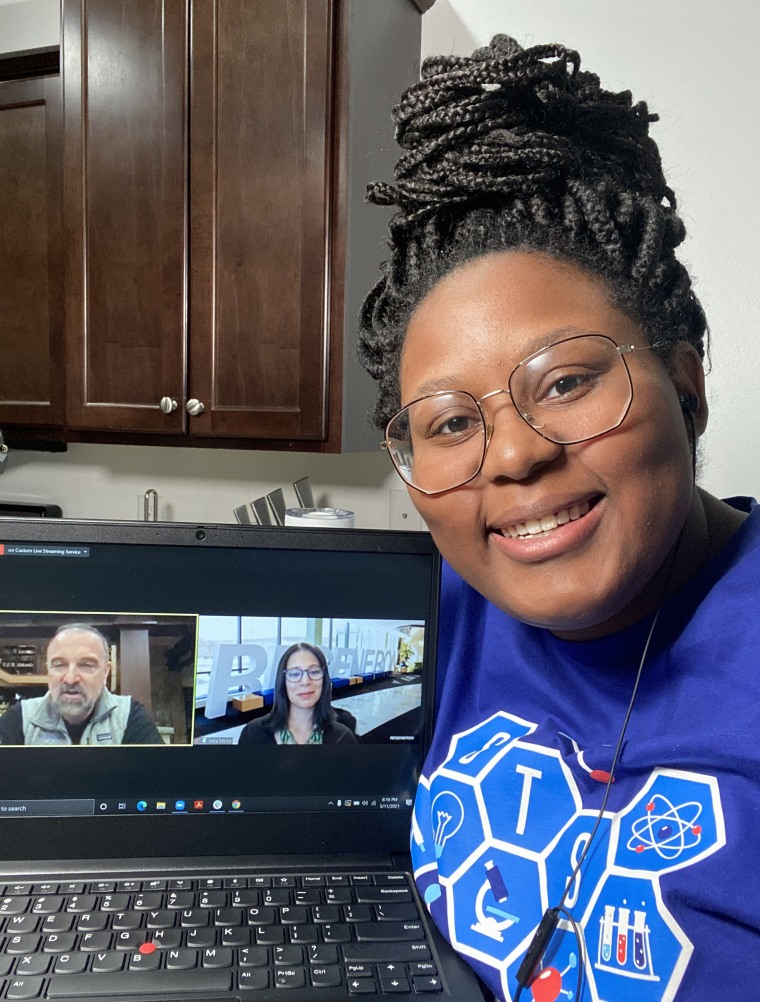When Dasia Taylor was a sophomore in high school, she asked for a suture kit. For a year, she perfected her stitches because she thought she wanted a career in medicine, like her idol Meredith Grey (the central character on the TV show "Grey's Anatomy").
After she worked so diligently on her stitches she wondered how she could take her interest further. When her chemistry teacher, Carolyn Walling, announced that she was looking for students to conduct research for science fairs, Taylor jumped at the chance. Through her research, she learned she could make better sutures.
“I want to create stitches that change color (when a wound becomes infected),” Taylor, 17, a senior at Iowa City West High School in Iowa City, told TODAY. “They can really be used to help people in developing countries.”

Walling loved the idea and directed Taylor to find a natural indicator, which is something that changes color when the acidity changes. They suspected that a natural product that detects acidity changes in skin could make sutures that alert people to infection.
“I put two and two together, using a natural indicator plus the pH of wound healing,” she said. “Beets were the first thing that I found.”
Taylor made sutures with beet juice concentrate that change from a bright red hue to a purple color when the pH level indicates an infection. Beets seemed like a good fit as they change color when pH reaches 8, also the pH level for an infection in humans. Normally, skin has about pH of 5.
“The beet stitches will be able to identify the pH changes in the tissue and the blood, which triggers them to change color. That's how the entire process works,” she said. “It's not complicated or anything like that. There aren't any fancy technologies. It's really just the basic principle of science.”

This is an inexpensive and easy way to monitor for infection, which aligned nicely with her overall goal. Taylor wanted to help people in developing nations after she had read an article that explained that people in poorer countries suffer from wound infection at higher rates.
“As a whole, citizens in developing countries are disproportionately affected by surgical site infections,” she said. “It could be really deadly … I said, “OK my beet stitches can really help with that and really serve as early detection.’”
But she also found that such a technology could make a huge difference in the lives of women.
“I have found that women in Africa, Asia suffer from surgical site infection after they have had cesarean sections,” she explained. “I said, ‘That’s not right.'"
After winning some local science competitions, her research was entered into the Regeneron Science Talent Search 2021 where she won the Seaborg Award. The 40 student finalists choose the winner of this prize, which goes to the participant who best represents the spirit of the competitors and the dedication of Nobel Prize-winning chemist Glenn Seaborg.
Maya Ajmera, president and CEO of the Society for Science, which hosts the competition, told TODAY that Taylor saw the project through an equity lens after reading about smart sutures in one of their publications, Science News for Students. Taylor learned that "one of the primary causes of death in the developing world is a result of infections from sutures,” Ajmera explained. “She is connecting the dots in so many ways and connecting a passion of hers around the issues of equity and found a project that drove that."

Taylor loves “Grey’s Anatomy” and once dreamed of being like Grey, but she hopes that her future career will allow her to improve the lives of others.
“I’ve always had a passion for helping people,” Taylor said. “I will be doing my research for as long as it takes to ensure that these stitches get to the people who need them.”